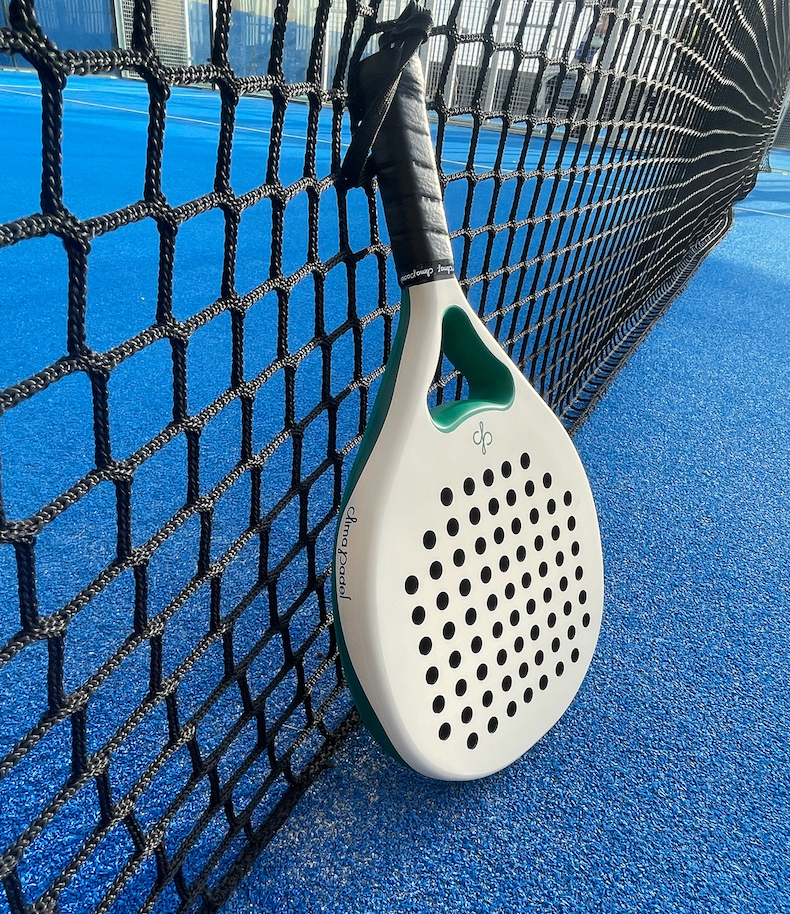
What Makes a Good Padel Racket?
Share
A Guide for Beginner to Intermediate Players
Whether you're stepping onto the court for the first time or looking to upgrade your game, choosing the right padel racket is essential. The right racket can dramatically impact your control, power, and even help prevent injury. With dozens of materials, shapes, and features to consider, this guide breaks down exactly what to look for—especially if you're a beginner or intermediate player.
Why the Racket Matters
In padel, your racket isn’t just a tool—it’s a partner in every shot. Unlike tennis, where rackets have strings, padel rackets are solid with a perforated face. The shape, core, materials, and weight all influence how you play: your control, power, spin, and comfort.
The wrong racket can lead to fatigue, poor performance, or even shoulder and elbow injuries. So let’s explore what makes a good racket for players who are just starting or improving.
1. Racket Shape
The shape of your racket affects your balance between control and power.
-
Round Shape: Best for beginners. The sweet spot is in the center and larger, making it easier to hit consistently.
-
Teardrop Shape: Balanced between power and control. Great for intermediate players ready to evolve.
-
Diamond Shape: Designed for advanced players who prioritize power. Smaller sweet spot and more weight at the top.
2. Weight and Balance
Padel rackets typically weigh between 230–360 grams (0.5–0.7 lbs).
-
Lighter Rackets (230–245g): Easier to handle and control; ideal for new players.
-
Heavier Rackets (245–360g): Provide more power but may fatigue the arm faster.
Balance refers to weight distribution:
-
Even Balance: Best all-around for transitioning players.
-
Head-Heavy: Adds power but less maneuverable.
-
Handle-Heavy: More control, easier to swing.
3. Core Materials (Hardness)
The core is made from foam or EVA (Ethylene Vinyl Acetate). Hardness affects control, vibration, and energy return.
-
Hardness 4: Ultra-soft, very forgiving. Best for absolute beginners.
-
Hardness 5: Slightly firmer, gives more power while still offering control.
-
Hardness 6: Hybrid core (75% soft, 25% hard). Ideal for intermediates transitioning to more advanced play.
Soft cores absorb vibration and are more comfortable, while harder cores provide more ball speed.
4. Face Material
-
Carbon Fiber (12K): Lightweight, strong, and responsive. Offers control and excellent durability.
-
Kevlar Reinforced: Improves vibration dampening and strengthens the structure.
-
Fiberglass: Found in beginner rackets, softer and cheaper but less durable.
Clima Padel rackets use 12K Carbon + Kevlar for maximum responsiveness and longevity—especially great for players looking to grow.
5. Surface Texture
Some rackets come with a rough or sandpaper-like surface to enhance spin. This is useful for intermediate players working on slice or topspin shots.
-
Smooth Surface: Consistent, more forgiving.
-
Textured Surface: More advanced; allows spin but requires technique.
6. Grip and Comfort
Look for these features:
-
Sweat-absorbent, padded grips.
-
Adjustable straps for wrist security.
-
Ergonomic handle designs to reduce strain.
Pro tip: Replace your grip regularly to maintain comfort and control.
7. Custom Features to Watch For
High-quality brands now offer:
-
Shock-absorbing tech (to reduce elbow/shoulder strain).
-
Anti-vibration cores.
-
Eco-friendly materials.
Racket Recommendations
For Beginners:
-
Bullpadel Indiga Control
-
Adidas Match Light 3.2
-
Clima Primavera (round shape, soft core, great design)
For Intermediate Players:
-
Nox ML10 Pro Cup
-
Babolat Reflex
-
Clima Clásico (teardrop, Eva Mix core, handcrafted in Spain)
Explore more premium rackets at ClimaPadel.com — handcrafted in Spain, designed in the US and Puerto Rico, and shipped worldwide.
The best racket for you depends on your style, strength, and skill level. Beginners should always prioritize control and comfort, while intermediates can begin testing spin, power, and balance. Avoid flashy gimmicks—stick to proven construction and ergonomic design.
Still not sure? Visit a local padel club and demo a few models before making a decision. Your ideal racket should feel like an extension of your arm—not a battle every time you swing.
